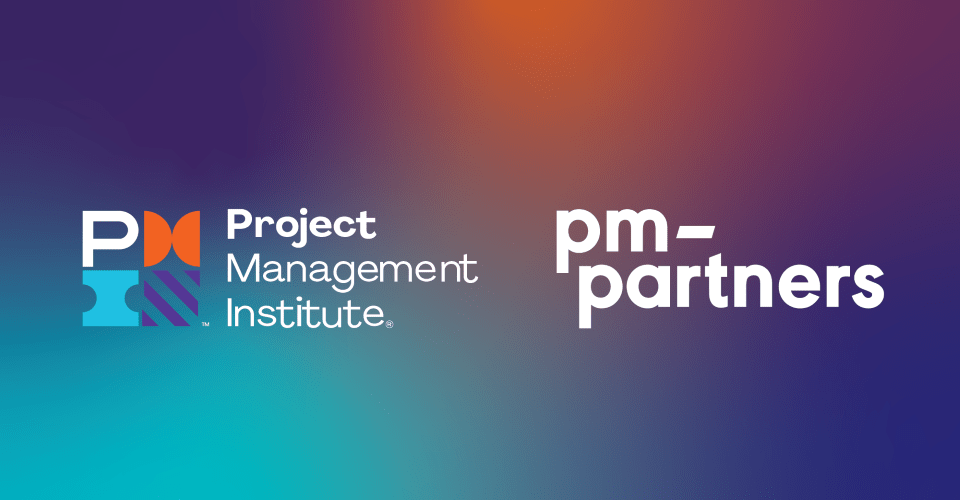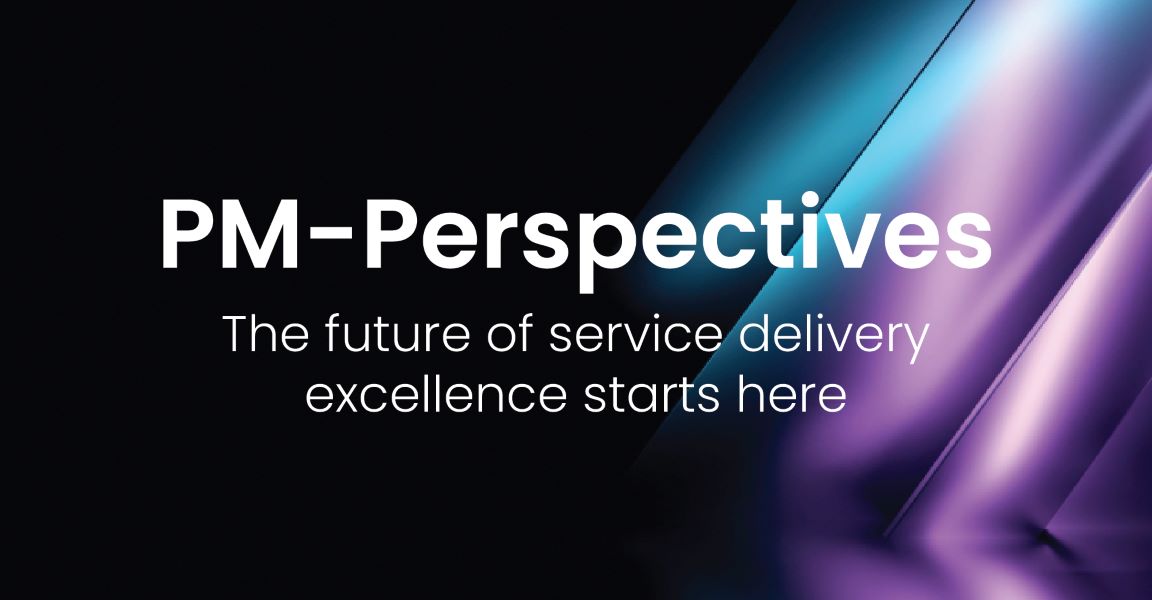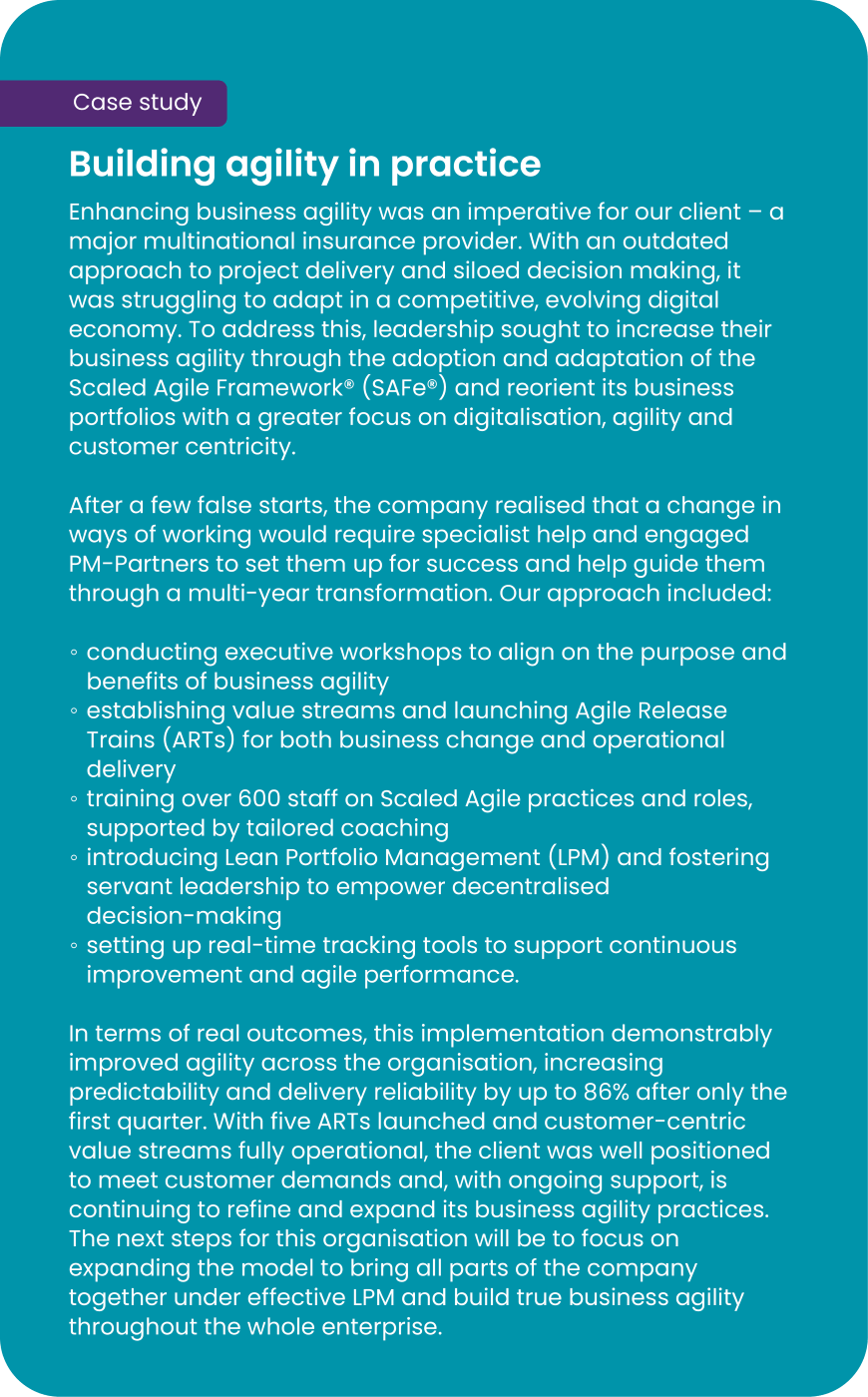What is business agility? Defining agile for modern business

Agile has its roots in software development methodologies but business agility is a much broader concept that is now gaining greater traction in the wider business world. Here Matt Sharpe, PM-Partners Agility Practice Lead and Agile Principal Consultant, explains how organisations should define agility to help their teams understand and adopt the concept, and ultimately reap its rewards.
Agility has become one of the top traits organisations seek for their people and their business operations, and no wonder; building a strong agile culture yields an increased commercial performance of 277 per cent, according to the third annual State of Agile Culture Report. This is a particular boon to organisations given the need to navigate through constant change and disruption while staying relevant and competitive.
However, while today’s business landscape is driving this quest for agility, there is much ambiguity as to what agility is in different contexts. One of the key issues fuelling this confusion is the adoption of agile (methodology) outside its roots in software development to other parts of the business, for example, engineering and research and development (R&D) were the fastest growing adopters of agile, up 16 per cent in 2023 compared to 2022.
In project-oriented organisations, agile has long been associated with the original Agile Manifesto for software development and the range of practices and methodologies that have sprung from the core principles over the past two decades. But this doesn’t wholly encompass an organisation’s ability to plan and execute its strategies. So how should we define agility in a way that not only incorporates agile methodologies but supports agile mindset, practices and behaviour at all levels?
What is business agility?
Agility indicates the ability of a person, team or organisation to:
- Quickly evaluate and address opportunities;
- Adapt in a dynamic market environment; and
- Continually improve and innovate products, services and business practices.
Business agility goes beyond mere responsiveness; it is an organisation-wide approach that empowers businesses to thrive in VUCA (volatile, uncertain, complex and ambiguous) environments where the adaptability of the organisation can confidently navigate the challenges presented. In other words, an organisation embracing true business agility is unfazed by disruption and uses its flexibility, speed and customer-centricity to align strategy, delivery and culture to quickly and effectively adapt to change and optimise innovation.
Agile vs agility: methodology vs mindset
While agile and agility are related terms, they are not the same thing; distinguishing between them is key to understanding where business agility comes from and how to nurture it.
Agile is a collective term for a set of methodologies and processes, such as Scrum, Kanban and SAFe. Rooted in the principles and values of the Agile Manifesto, they emphasise collaboration, adaptability, and customer focus and provide structured frameworks for implementing agile practices. When practised correctly they can support team members to embed agile in their thinking and behaviour. The issue is, however, that these methodologies are generally designed for particular business tasks, like software development or project management.
Business agility on the other hand, is more than the application and implementation of methodologies. It is characterised by the internalisation of a mindset and culture that supports and empowers agile principles and practices across the whole organisation, from frontline teams, all the way up through portfolio management and on up to the C-suite.
In other words, agility beyond methodology entails broad behavioural change. You’ll know you’re on the right track when, among other traits, team members:
- take the view that change provides opportunity for growth
- prioritise customer-centric problem-solving and value delivery
- communicate and collaborate effectively, including across different departments
- feel psychologically safe and empowered in their decision making
- can pivot relentlessly and without mercy or guilt
- embrace a culture of continuous learning and adaptation.
Over time, as teams transcend methodologies these new, learned behaviours and characteristics translate to broad benefits for the organisation at large.
The benefits of business agility
In addition to the great commercial benefits of agility (note the increased commercial performance of 277 per cent mentioned earlier), there is a perception that agile can increase business value and accelerate time to market. According to The 17th State of Agile Report, 41 per cent of respondents adopt agile for these two reasons.
Respondents also place increased collaboration (59 per cent) and better alignment to business needs (57 per cent) as two major benefits of agile practices, followed by a better work environment (36 per cent).
In terms of concrete advantages, these benefits – combined with greater efficiency and customer centricity – translate into significant improvements across key areas, particularly as agile maturity grows. For example, when comparing agile business units with their non-agile counterparts in organisations that were either undergoing or had undergone an agile transformation, a McKinsey study observed the following:
- 93% of agile units rated themselves higher in customer satisfaction
- 76% reported higher employee engagement
- 93% saw an improvement in operational performance.
Agility in organisations
Agile often starts in specific departments – software development and project management being two popular teams – but can be introduced organisation-wide. It is important to note, however, that embracing and nurturing agility more broadly requires significant workplace change. Organisations must support their leaders and employees to ensure consistency of practice and to enable teams to thrive in an agile environment.
Leveraging external advisory expertise is a wise investment to guide your transition and ensure you experience the benefits of greater agility. For example, the right partner can conduct a business capability assessment to analyse current state and level of agile maturity before recommending a tailored uplift program to drive success.
Skills development options include agile certification or training, which can be conducted in-house for convenience, and/or hiring an agile coach to embed learning and behaviours. Organisations can also take advantage of PM-Partners’ two-day ‘Big Room Training’ in business agility. Catering to up to 60 attendees, this is an economical, effective way to uplift several teams simultaneously as they develop both the skills and mindset to improve agility.
Moving the dial from agile to agility
Agile has come a long way since the Agile Manifesto for Software Development was written in 2001 – business agility is now viewed as a desirable outcome that corresponds with superior commercial performance and high-performing teams. Agile is no longer just a practice or methodology but the conversation has moved towards ‘agility’, which is a mindset and organisational culture that can be nurtured to take it beyond projects and into the DNA of the entire company.
To facilitate this transformation, it’s crucial that organisations take a proactive approach. Seeking out external advice and supporting this investment with a commitment to upskilling teams, is the ideal place to start. With the right guidance and support, all organisations can ensure they’re better placed to adapt and drive change whatever their business context.
Ready to build agility in your organisation? PM-Partners’ expert advisors are on hand to guide your organisation through this transition, supported by our best practice training offerings. Contact us today or call 1300 70 13 14 for more details.

About The Author
Matt Sharpe
Agility Practice Lead/ Agile Principal Consultant, PM-Partners
Matt has a proven track record across multiple industries, from government and financial services to not-for-profit and media, and is passionate about helping organisations succeed through leveraging best practice in business agility, change management, digital, agile transformations, and capability uplifts. He has deep expertise across agile project, programme and portfolio management, diagnostics and assessments and extensive experience in consulting, digital strategy, BPR, analytics and project management. Matt is a Certified SAFe® 6.0 Practice Consultant (SPC), AgilePM practitioner, Lean Portfolio Manager, certified Scrum professional, CSM and CSPO.









